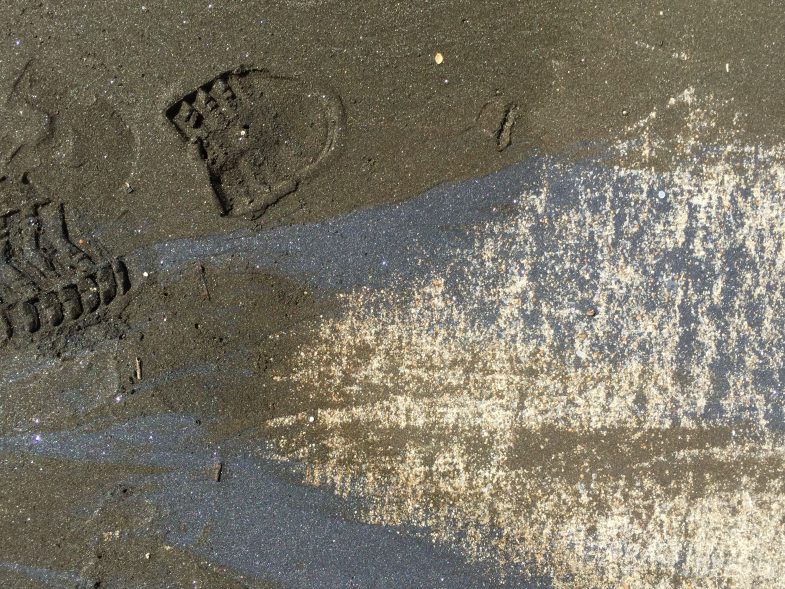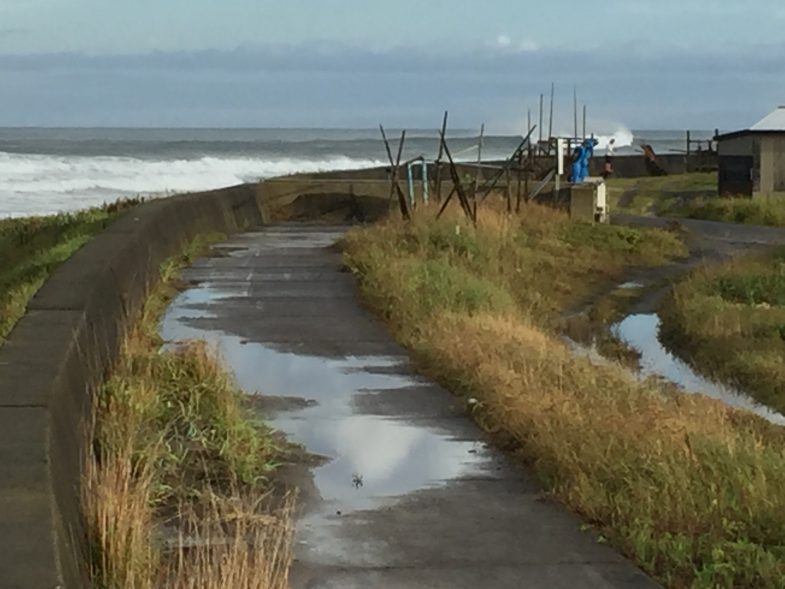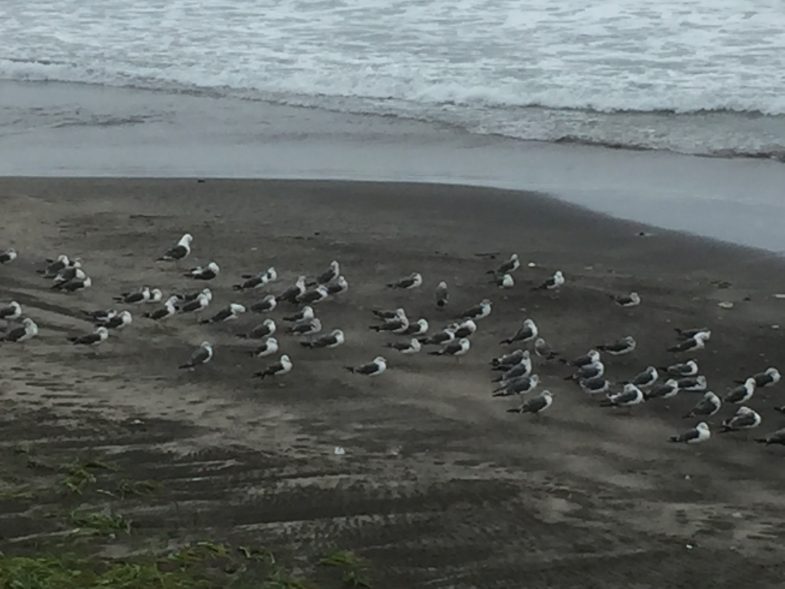
Most japanese people don’t know that Shimokita is very rich area in Iron. Bluish sand is Iron in Photo. Walking on the sand in summer is like torture by standing on heated iron plate.
下北半島には豊富な砂鉄が眠っている。かつて製鉄所建設の計画さえあったほどだ。写真ではやや青みがかって見えるのが砂鉄。夏の陽に炙られた砂鉄の上を裸足で歩くのは、熱い鉄板の上を歩く拷問のようなものだった。

